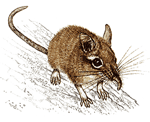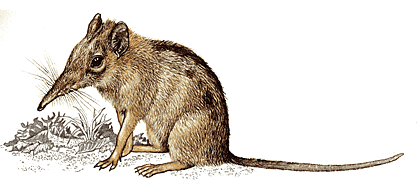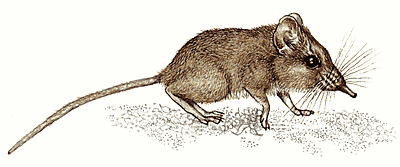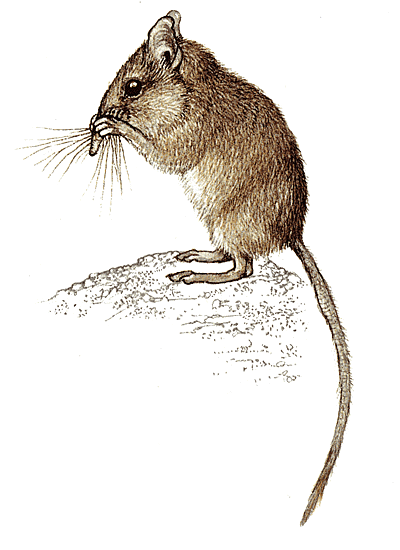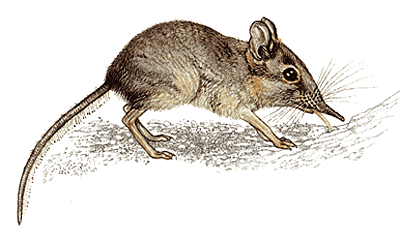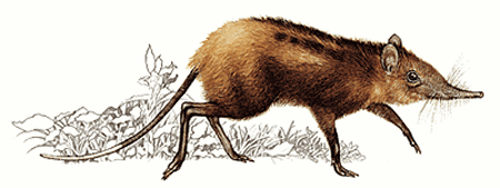Animals, Elephant Shrews
(shrewd configurations of the elephant shrew)
With a trunk similar to a pachyderm and an anteater's tongue, the elephant-shrew looks like a modified squirrel designed by someone with a creative imagination
They appear to be put together from spare parts of other animals. Their enclosure at the National Zoo in Washington, D.C. calls them elephant-shrews, suggesting a cross between the largest land mammal on earth and the smallest. Just like elephants, they have delicate, quivering trunklike snouts, for rooting through leaf litter. Just like shrews, they eat insects, flicking elongated tongues from underneath the trunk to snap up their sought-after food. Their bodies are furry and rodentlike, with glossy black eyes and long, leathery tails.
Another special characteristic is their spindly antelope-like legs. Elephant-shrews, unlike many other small mammals, don't scuttle down burrows to escape hungry predators. Instead, they run away with great speed. They are said to be fast enough to be overly confident about their fast get-a-ways. When they spot an approaching predator, they may simply sit still and slap that elongated tail against the leaf litter. It is considered more accurate to think of elephant-shrews as dwarf anteater-antelopes. Their Bantu name is sengi.
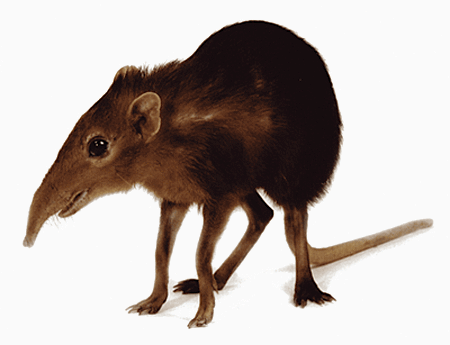
Elephant-shrews are native only to Africa, where 15 species live in deserts, savannas, and forests. Since scientists discovered them in the mid-1800s, they have variously described these animals as insectivores (for example, shrews and moles), ungulates (antelopes and the like), even lagomorphs (primarily rabbits).
Apparently DNA analyses has placed them in their own separate order, Macroscelidea. It also seems that they are part of the newly proposed superorder Afrotheria, whose members emerged from a common ancestor some 100 million years ago. Though a small group, Afrotheria are decidedly diverse, ranging from tenrecs, hedge-hog-like creatures, some weighing less than a quarter-ounce, to elephants weighing 11,000 pounds, and also including aardvarks, manatees, hyraxes, and golden moles.
Unlike many other small mammals, which tend to be nocturnal, elephant-shrews are active by day.
More information about "elephant-shrews"
Naturalists who have never seen elephant-shrews in the wild, often refer to them as jumping shrews because they thought that their long rear legs were used for hopping. They have been called elephant-shrews because they have long snouts like elephants and eat insects (invertebrates) just like shrews do. Although elephant-shrews do have long noses to forage for insects, their similarity to true shrews has no further similarities.
With large eyes and long legs resembling those of small antelopes, a trunk-like nose, high-crowned cheek teeth similar to those of a herbivore, and a long rat-like tail; they have been shuffled by scientists from one taxonomic group to another.
